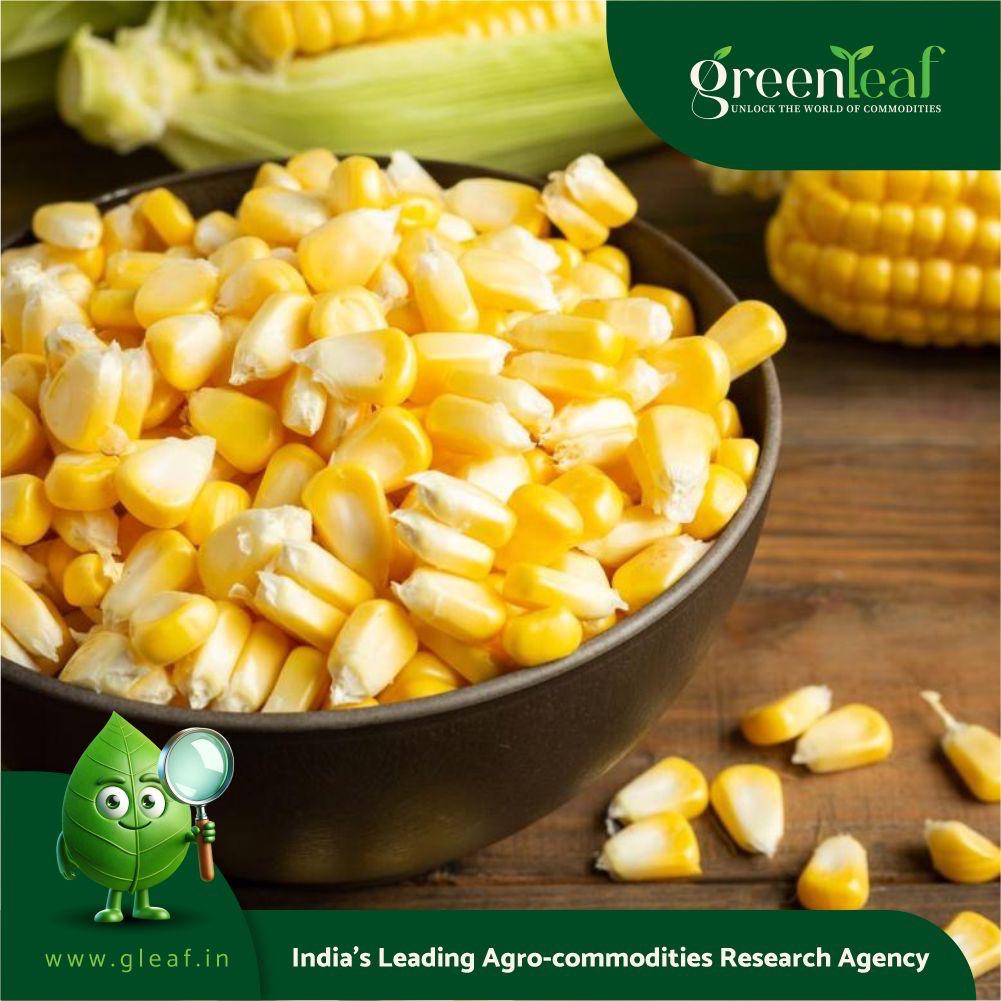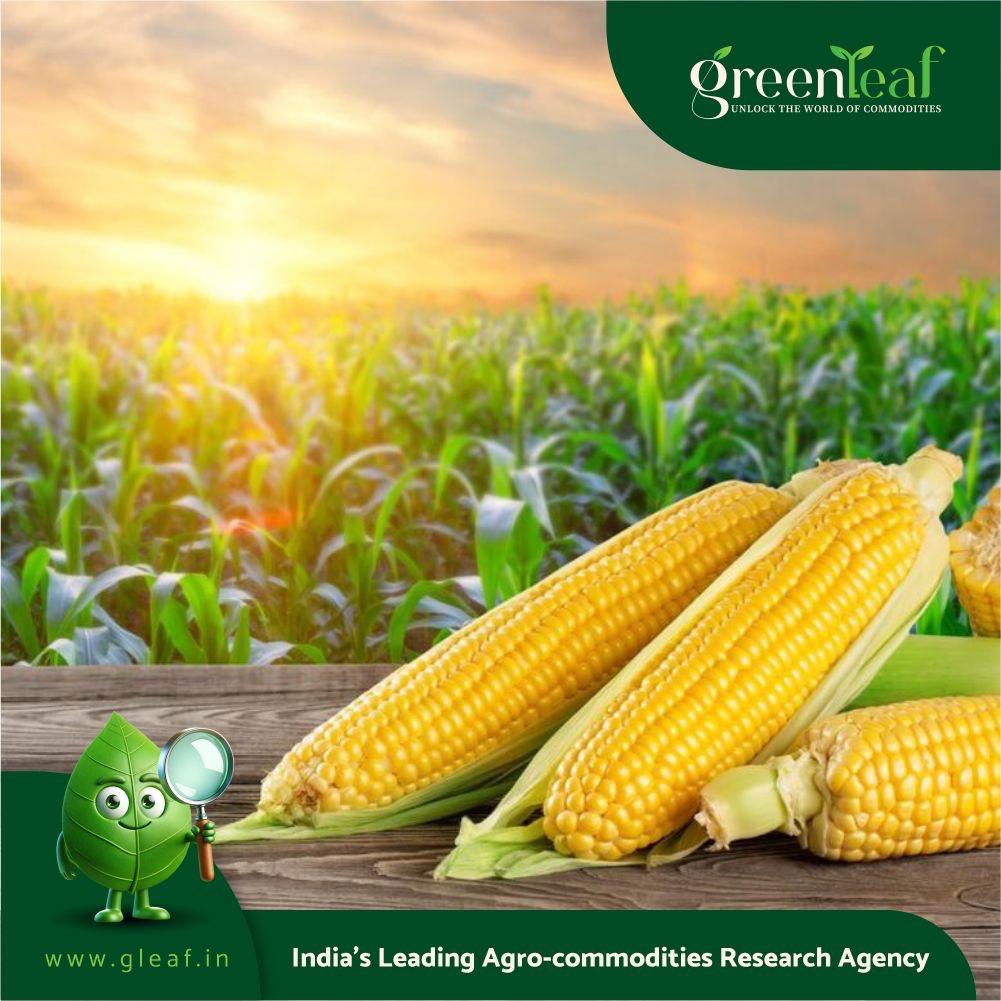Take cotton: The raw kapas bolls that farmers harvest yield not just the white fluffy fibres or lint. They also contain seeds, from which edible oil (food) is extracted. The residual protein-rich cake after oil extraction is used as a feed ingredient for cattle and poultry.
But it is the fourth ‘F’ – as fuel – that’s creating ripples, if not consternation, among existing user industries. This is especially so with maize.
Imbalance from ethanol
Till 2021-22, India’s maize output, at 32-33 million tonnes (mt), exceeded domestic demand of around 28 mt. It even left a surplus for exports, which touched 3.7 mt in 2021-22.
The situation changed with maize also becoming a feedstock for making ethanol, a 99.9% pure alcohol that can be blended with petrol. Maize grains contain 68-72% starch and 1-3% of other carbohydrates (sucrose, glucose and fructose).
While carbohydrates are the principal energy source for livestock, they can be fermented into ethanol, too, using yeast. One tonne of maize gives some 380 litres of ethanol; the process involves milling the grains into flour, breaking down the starch into shorter carbohydrate chains and fermentable sugars, fermentation (to 15% pure alcohol), distillation (to 94% spirit) and dehydration (to 99.9% fuel ethanol).
In 2022-23, sugar mills/distilleries supplied 31.51 crore litres of ethanol produced from 0.8 mt of maize. In 2023-24, this rose to 286.54 crore litres, consuming 7.5 mt of maize.
For the 2024-25 supply year (November-October), oil marketing companies have contracted 484.35 crore litres of maize ethanol. The corresponding maize requirement would work out to over 12.7 mt.
“The diversion of maize for biofuel has completely upset the demand-supply balance. The surge in demand from it has led to a shortage of grain and pushed up prices,” said Divya Kumar Gulati, chairman of CLFMA (formerly Compound Livestock Feed Manufacturers Association) of India.
All-India average prices of maize have surged from Rs 14,000-15,000 to Rs 24,000-25,000 per tonne in the last four years (Table 1), largely attributable to the ethanol-blended petrol programme.
Collateral impact: On soyabean
But the impact isn’t limited to maize prices.
After ethanol is produced from maize and separated through distillation, the wet fermented grain mash that remains is further dried. It results in what is called DDGS – distiller’s dried grains with solubles. This residual byproduct is a protein-rich material that has emerged as an alternative livestock feed ingredient.
DDGS from maize has 28-30% protein content. It’s even higher, at 45%, for DDGS that is a byproduct of ethanol made from rice grains. The protein source that livestock feed manufacturers normally use is the residual de-oiled cake (DOC) after extraction of oil from soyabean, mustard, cottonseed, groundnut or rice bran. But these are costlier than DDGS.
Distilleries are currently selling DDGS from maize at around Rs 16,000-17,000 and that from rice at Rs 18,000-19,000 per tonne. This is as against ex-factory prices of Rs 31,000-32,000 per tonne for soyabean DOC, which has 45% protein.
The DDGS quantities being produced by distilleries isn’t small. At 33% of grain weight, the DDGS from 12.7 mt of maize comes to 4.2 mt. The DDGS content is lower, at 25%, from rice. But even on the 4 mt of rice required for supplying the contracted 174.4 crore litres of ethanol from this source in 2024-25, the corresponding DDGS produce (at 430-440 litres per tonne of grain) would be 1 mt.
In all, 5 mt-plus of DDGS would be generated as a byproduct of ethanol from maize and rice. The additional supply of this alternative protein feed ingredient is, in turn, exerting downward pressure on soyabean DOC prices. These have fallen by 30% or so in the last two years (Table 2).
“Feed makers are blending DDGS with soybean DOC to reduce production cost and offset the increase in maize prices. But the collateral impact is on soyabean, which is trading at Rs 4,300 per quintal, well below the government’s minimum support price (MSP) of Rs 4,892,” a leading Latur (Maharashtra)-based soyabean processor pointed out.
Simply put, while the ethanol biofuel programme has benefitted maize farmers – they are realising rates close to, if not above, the MSP of Rs 2,225/quintal – it has hit soyabean growers hard, via the DDGS route.
Can imports restore balance?
Broiler feed contains 55-65% maize by weight, with these at 50-60% for egg-layer feed and 15-20% in cattle feed.
Not for nothing that the feed industry wants liberalisation of maize imports, more so given rising prices and domestic demand-supply imbalances.
India now allows up to 0.5 mt of maize imports annually at 15%, with quantities beyond that attracting 50% duty. Also, it does not permit imports of genetically modified (GM) maize. Out of the 0.94 mt imported during April-January 2024-25, 0.51 mt was from Myanmar and 0.39 mt from Ukraine, which do not grow GM maize.
“We aren’t demanding any change of government policy on GM maize imports with regard to food or feed. All we are seeking is these be allowed for ethanol production. The imported GM maize will not be for use as seed (that farmers can plant) or for feed and food, but only for making fuel ethanol,” explained CLFMA of India’s Gulati.
Opening up imports of GM maize will benefit the world’s top three exporters: United States, Brazil and Argentina. They mainly cultivate GM maize. The US, in particular, is looking for new markets after China – until recently the largest buyer of its maize and soyabean, which is also GM – has practically stopped imports from the country.
“The government may have to take a considered decision on permitting duty-free imports, including of GM maize. This might help check soaring feed costs for poultry and dairy producers, but the interests of our maize and soyabean farmers cannot be ignored either,” a sugar industry source noted.
Out of the 28 mt demand, roughly 20 mt was from the livestock feed industry. That included 15 mt for poultry (both broiler chicken and egg layer birds) and 5 mt for cattle feed. Another 5 mt was for industrial starch production, 2 mt for direct human consumption, and 1 mt for seed and other uses.
Out of the 28 mt demand, roughly 20 mt was from the livestock feed industry. That included 15 mt for poultry (both broiler chicken and egg layer birds) and 5 mt for cattle feed. Another 5 mt was for industrial starch production, 2 mt for direct human consumption, and 1 mt for seed and other uses.
Out of the 28 mt demand, roughly 20 mt was from the livestock feed industry. That included 15 mt for poultry (both broiler chicken and egg layer birds) and 5 mt for cattle feed. Another 5 mt was for industrial starch production, 2 mt for direct human consumption, and 1 mt for seed and other uses.
A win-win situation, he added, would be to increase domestic production of maize by boosting yields and diverting acreages from rice that is both water-guzzling and in surplus: “We need more maize and it should replace rice, not soyabean or cotton”















